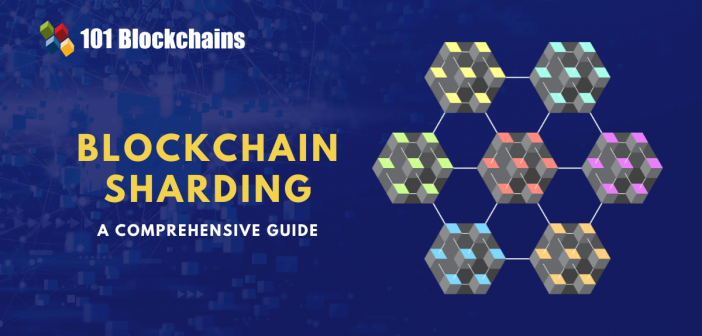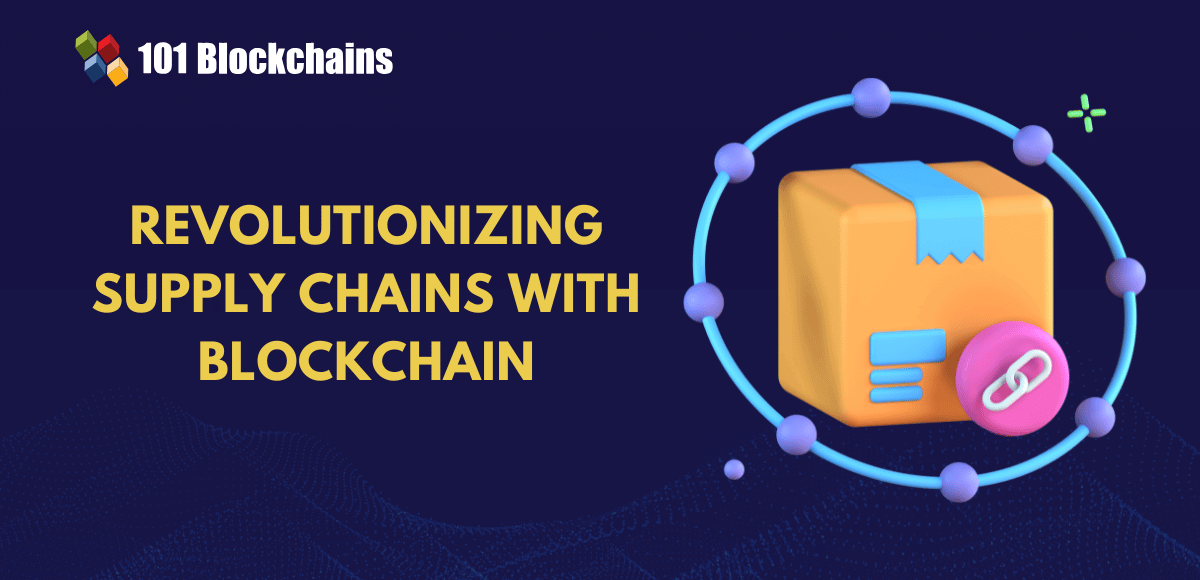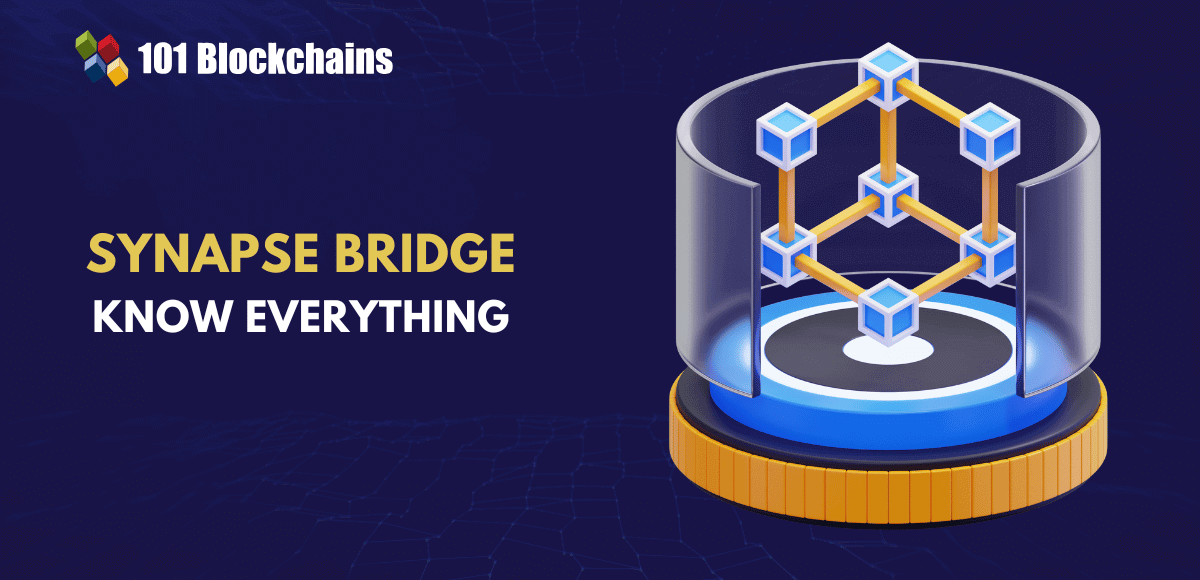Learn how blockchain truly works, master key definitions, and uncover what makes smart contracts so "smart." Dive into the fundamentals, gain valuable insights, and start your blockchain journey today!

- Blockchain
James Howell
- on June 23, 2022
What Is Blockchain Sharding?
Blockchain has been a major driver of changes in the perception of value alongside the ways of conceptualizing money. Starting from cryptocurrencies, blockchain technology has been able to spark interest in the minds of many people throughout various industries. Many people have been turning towards blockchain networks, thereby increasing the traffic on the networks. In such cases, blockchain sharding has evolved as an answer to the scalability and congestion problems on blockchain networks.
In the initial stages, blockchain was considered synonymous with cryptocurrencies. However, it has evolved into a larger ecosystem featuring the power of decentralization alongside introducing ledger and smart contract services in various applications. As the scope for applications of blockchain networks continues to rise, the demand for scalability is inevitable. How does sharding help in such cases? The following discussion helps you find an answer with an introductory guide to sharding on blockchain.
Build your identity as a certified blockchain expert with 101 Blockchains’ Blockchain Certifications designed to provide enhanced career prospects.
Definition of Sharding
One of the first things you must be searching for here is an answer to “What is blockchain sharding?” and its implications. However, you can have a better impression of sharding by taking a look at the background for the same. The example of Ethereum is the ideal foundation for developing your understanding of sharding. Interestingly, the basic idea behind Ethereum focused on more than the motive of introducing a new cryptocurrency.
The developers behind Ethereum wanted to come up with a ‘world computer’ of sorts that could help in harboring a new ecosystem of decentralized applications. Ethereum aims to serve as a platform for running, managing, and expanding the use cases of dApps across various sectors. Therefore, Ethereum needs the capability and resources for processing and storing massive volumes of data within its ecosystem.
As of now, Ethereum does not have the capabilities for storing and safeguarding huge volumes of data. On the other hand, Ethereum can find a viable solution to its scalability problem through sharding. In simple words, you can explain sharding as the process of scaling applications to empower them to support more data.
In the case of sharding blockchain projects, you would basically break the large tables of data into smaller pieces, referred to as shards. Every shard features its own data and makes it unique among other shards. In the case of blockchain, sharding can enable reductions in latency and prevent data overload.
Excited to learn the basic and advanced concepts of ethereum technology? Enroll Now in The Complete Ethereum Technology Course
Working of Sharding
The understanding of blockchain or cryptocurrency sharding can become clearer with a deep dive into its work. First of all, it is important to note that sharding is applicable in cases where you have a large dataset for a single database. You can notice the same in Ethereum, where multiple developers are working on numerous projects on the platform.
As of now, more than 3000 dApps work on the Ethereum blockchain, thereby implying the necessity of scalability through sharding. Sharding can help in dividing the network into smaller modules or partitions with the capability for processing more transactions every second. Even if the process of sharding seems simple, it involves many crucial components with vital functionalities.
You can find the answers to “Is sharding well for blockchain?” by reflecting more on the working of sharding for blockchain. It is important to start the explanation of how sharding works by reviewing the functionalities of nodes. At the same time, you must also understand the mechanisms for storing and processing data.
Nodes are one of the integral components of the blockchain network model. Without nodes, it is practically impossible to access blockchain data. All the nodes in a blockchain network stay connected with each other exchanging data consistently to stay updated. In simple words, nodes serve as the foundation layer of the blockchain and work on important functions. They support the storage, preservation, and expansion of data throughout the infrastructure.
-
How Are Nodes Relevant to Sharding?
The importance of nodes in blockchain sharding can help you understand the mechanism effortlessly. In the case of decentralized networks, nodes have the capability of storing critical information such as account balances and transaction history. Blockchain networks distribute the data and information about transactions throughout multiple nodes to ensure security.
On the other hand, the model compromises a lot in terms of scalability. The distributed ledger system in blockchain networks offers security and decentralization. However, blockchain networks fail to cope with a large volume of transactions, and the high volumes of data associated with the transactions can lead to network congestion. As a result, the network can end up experiencing slowness or latency in its operations.
For example, Ethereum can process around 10 to 20 transactions every second. Is it applicable to a blockchain network that is emerging as the preferred choice for blockchain applications? The successful instances of sharding blockchain projects deliver an impression of how nodes can be reconfigured for handling a large volume of transactions.
The blockchain network can distribute its workload horizontally, thereby ensuring that all nodes don’t have to manage or process all the transactions. Therefore, the compartmentalized and efficient design of nodes in a blockchain network can shed light on the relevance of nodes in sharding.
Start learning Blockchain with World’s first Blockchain Skill Paths with quality resources tailored by industry experts Now!
-
Horizontal Partitioning
The working of cryptocurrency sharding does not involve physical partitioning of the network of nodes. On the contrary, the horizontal partitioning of the blockchain network or database helps in creating different rows in sharding. The rows are referred to as shards, and the horizontal architecture helps in creating a highly dynamic ecosystem.
It has helped shards in performing various specialized actions on the grounds of their traits. For example, a shard could store the transaction history alongside the state of a specific address. On the other hand, a shard could also perform tasks such as coordinating with other shards for transaction processing.
Imagine a large database featuring six rows. You can break down the table into three smaller, horizontal rows, which enables easier processing for the large table of data. Horizontal partitioning in blockchain sharding helps in converting the larger database into smaller and more efficient versions of the original while retaining the basic features. However, horizontal partitioning is not the only option for achieving scalability. You can also discover other solutions, such as layer 2 scaling applications or vertical scaling solutions.
Examples of Sharding
The basic explanation of sharding must have offered a detailed answer to “Is sharding well for blockchain?” with positive implications. As a matter of fact, sharding is truly an innovative method for resolving the problems of network latency and bandwidth. Both these issues can affect the scalability of a blockchain network by huge margins while sharding resolves them effortlessly. On the other hand, many of you must have doubts pertaining to the efficiency of sharding. Is there any better version of sharding?
What are the practical examples of sharding blockchain projects in the present times? The two most notable variants of sharding include partitioned sharding and state sharding. Partitioned sharding is applicable in scenarios that don’t have the shards communicating directly with each other by leveraging a central relay.
On the other hand, state sharding involves direct communication among shards with a central or state relay. You can answer the questions regarding the efficiency of cryptocurrency sharding by reflecting on practical examples of the same. The four top examples of sharding projects can help you identify the significance of sharding for the broader crypto ecosystem.
Aspiring to make a lucrative career as a blockchain engineer but not sure how? Check the detailed guide Now on How To Become A Blockchain Engineer
1. NEAR Sharding
The first example for understanding “what is blockchain sharding?” more clearly is the NEAR blockchain network. It focused on developing the foundation for real-time cross-shard transactions alongside maintaining a light load on clients. The blockchain is aimed at enabling any low-end device to run a node working as a part of the network.
Subsequently, the low-end device can also help in processing a subset of the transactions. The sharded Proof of Stake blockchain features higher scalability and enables nodes to operate on low-end devices. As a result, sharding of the network can enable access to multiple additional devices, which improves the speed of the blockchain.
Apart from the benefits of sharding, NEAR blockchain must encounter the issues of data availability and validity. Blocks must feature proof of validity, which should be available for anyone to verify the block. The validators in the network take the responsibility of ensuring the availability of the proof. On the other hand, it is difficult to prove the failure in message delivery without on-chain transfer of the message. However, you can also look up solutions like centralized governance and infrastructure for resolving such problems.
2. Ethereum Beacon Chain
The doubts regarding “is sharding good for blockchain?” can find a suitable answer in the Beacon Chain of Ethereum. Interestingly, the Beacon Chain is an integral highlight of the roadmap for Ethereum 2.0. As a matter of fact, the Beacon Chain is the “master chain” in the newly evolving Casper Proof of Stake system of Ethereum.
The Beacon Chain has been tailored for crucial tasks such as processing crosslinks and storage and maintenance of the set of active, queued, and inactive validators. It also helps in processing Ethereum block-by-block consensus alongside the finality gadget. The Beacon Chain not only manages the Proof of Stake protocol but also the other shard chains. Some of the notable functions of the Beacon Chain would include the following,
- Management of validators and their relevant stakes.
- Implementation of consensus rules.
- Organization of validators into different committees for voting on the proposed blocks.
- Allocating rewards and penalties to validators.
- Nomination of the selected block proposer pertaining to every shard.
- Serves as the anchor point for shards to register their states and facilitates cross-shard transactions.
Want to learn the basic and advanced concepts of Ethereum? Enroll in our Ethereum Development Fundamentals Course right away!
3. Polkadot Parachain
The next interesting entry among sharding blockchain projects would point at Polkadot Parachain. It is a productive approach to distributed database sharding and offers a simpler perspective on the blockchain. The parachain basically refers to a simpler iteration of blockchain, which associates with the security offered by a relay chain. One of the significant features of parachain refers to completely independent nature of the computations.
The generalized systems in Turing-complete smart contracts can face difficulties in identifying the conflicts between transactions. On the contrary, the specification of clear boundaries among parachains could help in executing all of them without conflicts. Furthermore, blockchain sharding on Polkadot with highly specialized parachains could help in addressing another significant objective. For example, parachains can help in resolving transaction operations alongside data storage efficiently for a specific problem.
Curious to understand the complete smart contract development lifecycle? Join the Standard & Premium Plans and get free access to the Smart Contracts Development Course Now!
Bottom Line
The final impression regarding discussions on “What is blockchain sharding?” reflects profoundly on the necessity of sharding. In simple words, sharding refers to the process of breaking down a bigger process into smaller fragments or shards. The shards of smaller processes contribute to the result of the overall process without compromising data integrity.
As a matter of fact, division of the work into multiple shards helps in efficient distribution of the workload for a blockchain network. The practical examples of sharding, such as the Ethereum Beacon Chain, present a solid case for the growth of sharding projects in the future. However, it is also important to improve the process and overcome the challenges to ensure the best results. Learn more about sharding and its implications for blockchain now.
*Disclaimer: The article should not be taken as, and is not intended to provide any investment advice. Claims made in this article do not constitute investment advice and should not be taken as such. 101 Blockchains shall not be responsible for any loss sustained by any person who relies on this article. Do your own research!





